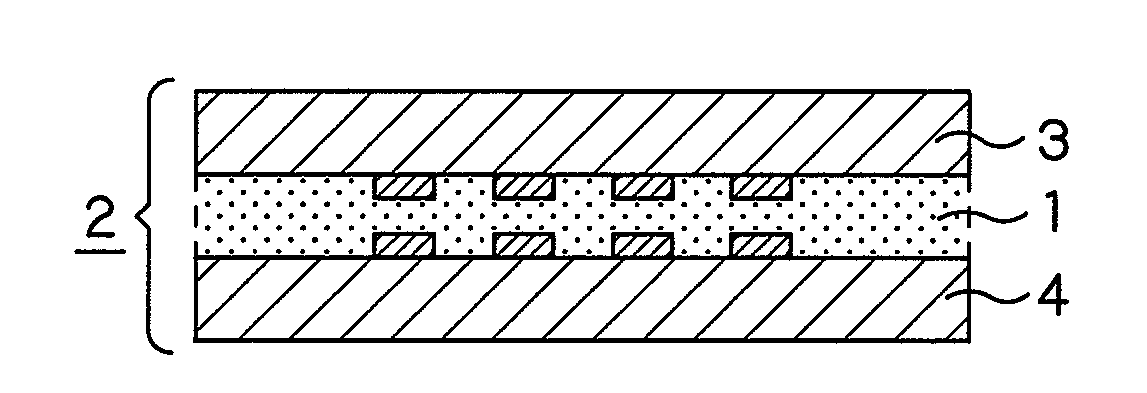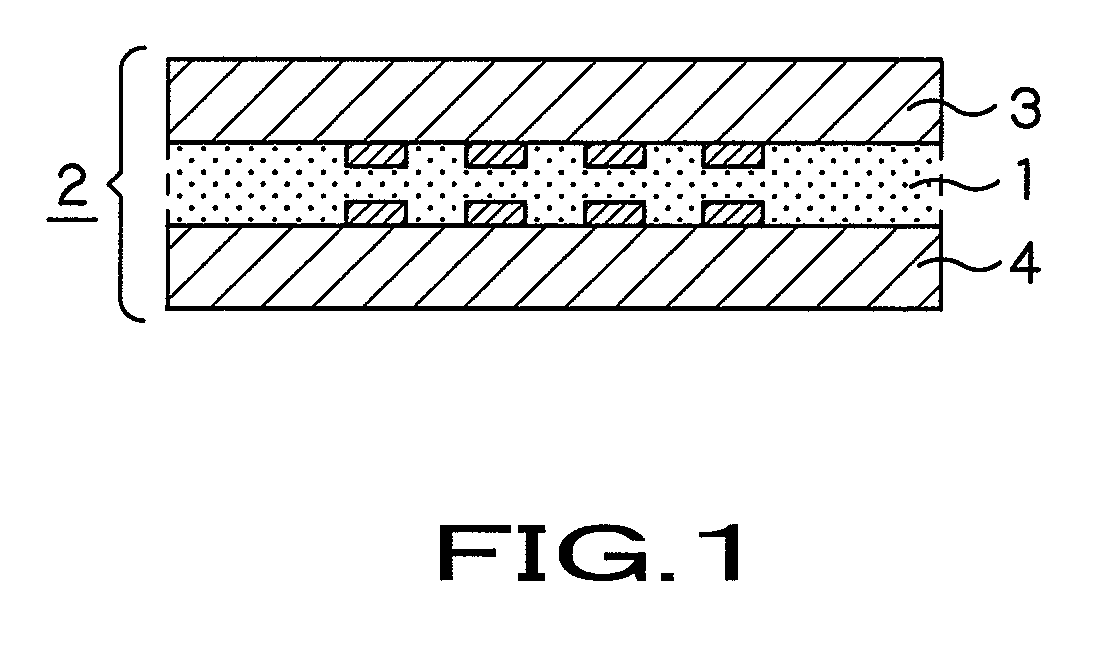Anisotropic electrically conductive film and connection structure
a technology of electrically conductive film and connection structure, which is applied in the direction of conductive materials, non-conductive materials with dispersed conductive materials, synthetic resin layered products, etc., can solve the problems of low connection reliability, low adhesion strength of connections, and connection itself, and achieve high adhesion strength
- Summary
- Abstract
- Description
- Claims
- Application Information
AI Technical Summary
Benefits of technology
Problems solved by technology
Method used
Image
Examples
example
[0042]An anisotropic electrically conductive film of the present invention will now be described with reference to an Example of the present invention. This Example will be explained in comparison with Comparative Examples 1 to 5 as tabulated in Table 1.
[0043]In the Example, methylethylketone (MEK) is used as a solvent. To 100 parts by weight of MEK, a phenoxy resin, a liquid acrylic ester, a peroxide based initiator, the acrylic rubber containing the hydroxyl groups, a phosphorus-containing acrylic ester, polybutadiene based fine particles, a silane coupling agent and electrically conductive particles were added in proportions (parts by weight) shown in Table 1. The resulting mass was mixed together by a mixer, and the so formed mixture was coated by a bar coater on a polyethylene terephthalate film, 50 μm in thickness, already processed with peeling. The resulting coated product was dried at 80° C. for five minutes to produce an anisotropic electrically conductive film 20 μm in th...
PUM
| Property | Measurement | Unit |
|---|---|---|
| temperature | aaaaa | aaaaa |
| adhesion strength | aaaaa | aaaaa |
| particle size | aaaaa | aaaaa |
Abstract
Description
Claims
Application Information
 Login to View More
Login to View More - R&D
- Intellectual Property
- Life Sciences
- Materials
- Tech Scout
- Unparalleled Data Quality
- Higher Quality Content
- 60% Fewer Hallucinations
Browse by: Latest US Patents, China's latest patents, Technical Efficacy Thesaurus, Application Domain, Technology Topic, Popular Technical Reports.
© 2025 PatSnap. All rights reserved.Legal|Privacy policy|Modern Slavery Act Transparency Statement|Sitemap|About US| Contact US: help@patsnap.com


